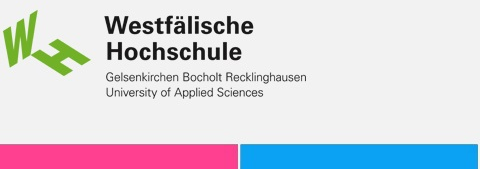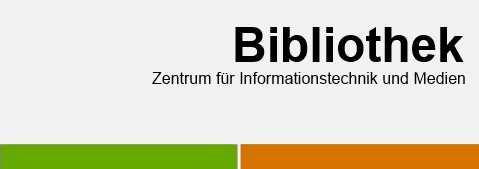Informatik und Kommunikation
Filtern
Erscheinungsjahr
Dokumenttyp
Volltext vorhanden
- nein (118) (entfernen)
Schlagworte
- Journalismus (14)
- Marketing (5)
- World Wide Web 2.0 (4)
- Alternative Geschäftsmodelle (3)
- Datenjournalismus (3)
- Flugkörper (3)
- Kommunikationswissenschaft (3)
- Mikroprozessor (3)
- Online-Medien (3)
- Rettungsrobotik (3)
- Robotik (3)
- UAV (3)
- CD-ROM (2)
- Club-TV (2)
- Content-Marketing (2)
- Crowdfunding (2)
- Empirische Methoden (2)
- Erweiterte Realität <Informatik> (2)
- Fachjournalismus (2)
- Gatekeeping (2)
- Graswurzel-Journalismus (2)
- Human-Robot Interaction (2)
- Innovation (2)
- Intel-Prozessor (2)
- Kulturmanagement (2)
- Medienforschung (2)
- Medienrecht (2)
- Mikrocomputer (2)
- Mikroinformatik (2)
- Netzwerk-Medien (2)
- Partizipativer Journalismus (2)
- Personal Computer (2)
- Physik (2)
- Social Media (2)
- Tetraplegie (2)
- Trennungsgrundsatz (2)
- Twitter <Softwareplattform> (2)
- Werbung (2)
- Wissenschaftliches Arbeiten (2)
- Öffentlichkeitsarbeit (2)
- Ökonomie (2)
- ANSI-C (1)
- Akademischer Grad (1)
- Akkreditierung (1)
- Akustik (1)
- Alltagsunterstützende Assistenzlösung (1)
- Arzneimittel (1)
- Assembler-Prgrammierung (1)
- Assisted living technologies (1)
- Assistive robotics (1)
- Atomphysik (1)
- Augmented Reality (1)
- Automatisierung (1)
- Automatisierung, Journalismus, Literaturüberblick (1)
- BSM (1)
- Bachelor-Studiengang (1)
- Befragung (1)
- Berufsfeldstudie (1)
- Bodily sensation maps (1)
- Boulevardisierung (1)
- Brand theory (1)
- Branding (1)
- COVID-19 (1)
- CRM (1)
- Chief Executive Officer (1)
- Commercial communication (1)
- Communication management (1)
- Continuous Queries (1)
- Curriculanormwert (1)
- Data Journalism (1)
- Datalog (1)
- Datenanalyse (1)
- Deductive Databases (1)
- Depression (1)
- Digitale Speicher (1)
- E-Learning (1)
- Elektrizitätslehre (1)
- Emotion induction (1)
- Entgrenzung (1)
- Enthüllungsjournalismus (1)
- Eventmanagement; digitale Events; interne Kommunikation (1)
- Fachgesellschaft (1)
- Fernsehnachrichten (1)
- Fernsehsendung (1)
- Festkörperphysik (1)
- Freundeskreis (1)
- Fuzzy-Optimierung (1)
- Galtung (1)
- Gatewatching (1)
- Greek dept crisis (1)
- Halbleiterspeicher (1)
- Hochschulbildung (1)
- Human-centered computing (1)
- IAPS (1)
- Incremental Evaluation (1)
- Integrierte Schaltung (1)
- Interaktion (1)
- Internationalisierung (1)
- Interrupt <Informatik> (1)
- Journalism (1)
- Journalistenausbildung (1)
- Kalman filter (1)
- Kernphysik (1)
- Kreditpunktesystem (1)
- Kulturelle Einrichtung (1)
- Kulturforschung (1)
- Kulturmarketing (1)
- Kultursponsoring (1)
- Kundenmanagement (1)
- MS-DOS (1)
- MS-DOS; Betriebssystem (1)
- Magnetspeicher (1)
- Master-Studiengang (1)
- Mechanik (1)
- Media Brands (1)
- Media brand characteristics (1)
- Media ethics (1)
- Media law (1)
- Media positioning (1)
- Medication (1)
- Medienethik (1)
- Mensch-Roboter (1)
- Mikrocomputertechnik (1)
- Mikroprozessor-Technologie (1)
- Mixed Reality (1)
- Modularisierung (1)
- Nachrichtensendung (1)
- Nachrichtenwert (1)
- Nachrichtenwerttheorie (1)
- Netzkommunikation (1)
- Netzwerköffentlichkeit (1)
- New Work, Information and Communication Industry, Innovation, Organizational Goals, Survey (1)
- Normalisierung (1)
- Optik (1)
- PASCAL (1)
- PR (1)
- Pandemie (1)
- People with disabilities (1)
- Politikjournalismus (1)
- Politische Berichterstattung (1)
- Politische Kommunikation (1)
- Politische Wissenschaft (1)
- Principle of separation (1)
- Redaktion (1)
- Relativitätstheorie (1)
- Replication (1)
- Robot assistive drinking (1)
- Robot assistive eating (1)
- Schwingung (1)
- Selbstverständnis (1)
- Sozialkompetenz (1)
- Sport-Marketing (1)
- Sportpublizistik (1)
- Streaming (1)
- TV-Journalismus (1)
- Thermodynamik (1)
- Trendstudie (1)
- Twitter (1)
- Update Propagation (1)
- Wahlforschung (1)
- Welle (1)
- Zeitschrift (1)
- Zustandsmaschine (1)
- assistive robotics (1)
- augmented reality (1)
- balance (1)
- cobot (1)
- ethics (1)
- expert interviews (1)
- human robot interaction (1)
- human-centered design (1)
- human-robot collaboration (1)
- hybrid sensor system (1)
- international comparative study (1)
- media accountability (1)
- neutrality (1)
- normalisation (1)
- participatory design (1)
- political journalism (1)
- projection (1)
- quality standards (1)
- relevance (1)
- risk management (1)
- role identity (1)
- sensor fusion (1)
- shared user control (1)
- state machine (1)
- television news coverage (1)
- user acceptance (1)
- virtual reality (1)
- visual cues (1)
- visualization techniques (1)
- watchblogs (1)
Institut
The disruptive nature of the changing media landscape and technology-driven advances in communication have led to innovative ways of organizing work in the information and communication industry. This reorganization of work is reflected in the concept of New Work, which rethinks working concepts, styles, and employee behavior. Based on a survey among staff in the information and communication industry (n = 380), this study investigates the status quo of the implementation of New Work measures and their effectiveness in helping companies reach organizational goals. The results show that New Work measures are widely adopted although there is still unused potential. Moreover, the study demonstrates that the implementation of New Work measures supports companies in achieving New Work goals as well as overall organizational goals in the contexts of agile management, change management, internal communication, and evaluation.
Media Brand Management
(2022)
The management of media brands faces challenges. In order to be able to point out possible solutions, this article first explains the concept and the nature of “media brands.” Subsequently, various theoretical approaches to the explanation of media brands and their management are presented. Regardless of theoretical preferences, it is important to keep in mind the brand-strategic complexity of media management that is subsequently described. Due to their specificity, special attention is paid to the basic strategic positioning options and to the communication management of media brands. In this way, the special features of media brand management become clear in comparison with other products and services.
Wie wählen Nachrichtenmedien aus, worüber sie berichten? Dieser Frage versuchen Nachrichtenwertforschende seit vielen Jahren auf den Grund zu gehen. Die Nachrichtenwertforschung ist eine der traditionsreichsten Forschungsrichtungen der Journalismusforschung, die bis zum heutigen Tag aktuell ist. Begründet wurde sie bereits in den 1920er-Jahren von Walter Lippmann, internationale Bekanntheit erfuhr sie durch Johan Galtung und Mari Holmboe Ruge, die 1965 eine Liste von Nachrichtenfaktoren entwickelten und diese empirisch überprüften. Es folgten unzählige empirische Untersuchungen zu diesem Thema, die sich an einer Weiterentwicklung der Theorie versuchten. Der vorliegende Beitrag gibt einen Überblick über die Entwicklungsgeschichte der Nachrichtenwertforschung und skizziert, was Forschende heutzutage an der Thematik interessiert.
Journalism and Advertising. On the Separation of Editorial Content and Commercial Communication
(2022)
The principle of separation between editorial content and commercial communication protects both the democratic and the commercial function of mass media. This article compiles all available statutory and professional regulations in Germany as an example of the various aspects of the principle of separation, such as the labeling obligation, the prohibition of paid content and tying transactions, as well as the handling of numerous forms of presentation of editorial advertising. Subsequently, the state of research is reported for the individual aspects of the principle of separation, in particular with regard to description and effect. Finally, proposed solutions for current application and desiderata are compiled.
Journalismus und Werbung. Zur Trennung von redaktionellen Inhalten und kommerzieller Kommunikation
(2022)
Der Trennungsgrundsatz zwischen redaktionellen Inhalten und kommerzieller Kommunikation schützt sowohl die Demokratie- wie auch die Werbeträgerfunktion von Massenmedien. Dieser Beitrag stellt für die diversen Aspekte des Trennungsgrundsatzes wie die Kennzeichnungspflicht, das Verbot von bezahlten Inhalten und Kopplungsgeschäften sowie die Handhabung zahlreicher Darstellungsformen redaktioneller Werbung alle verfügbaren gesetzlichen und standesrechtlichen Regelungen zusammen. Anschließend wird für die einzelnen Aspekte des Trennungsgrundsatzes der Stand der Forschung insbesondere hinsichtlich Beschreibung und Wirkung referiert. Schließlich werden Lösungsvorschläge für die aktuelle Anwendung und Desiderata zusammengetragen.
Kompensationsgeschäfte sind als Kopplungsgeschäfte medienrechtlich verboten. Laut Berichten von Praktiker*innen sind sie jedoch alltägliches Werkzeug im Austausch zwischen Journalist*innen und Verlagen einerseits sowie PR-Akteur*innen und Werbungtreibenden andererseits. Auf Grundlage kommunikationswissenschaftlicher, medienrechtlicher und betriebswirtschaftlicher Literatur sowie einer Befragung von 37 Expert*innen aus der Kommunikationsbranche wird untersucht, welche Formen von Kompensationsgeschäften in der Praxis existieren und welche Rolle Kompensationsgeschäfte im Wechselverhältnis von Öffentlichkeitsarbeit und Journalismus spielen. In der alltäglichen Berufspraxis mancher Branchen und Redaktionen werden im Ergebnis mit großer Selbstverständlichkeit Kompensationsgeschäfte genutzt. Daher wird nach einem definitorischen Abgleich von Induktionen, Adaptionen und Kompensationen eine Erweiterung des Intereffikationsmodells vorgeschlagen.
Der Datenjournalismus wird gleichermaßen stark in der Nachrichtenbranche beobachtet und in der Journalismusforschung reflektiert. Dieser Beitrag beschreibt das Phänomen zunächst im Kontext des Megatrends der Automatisierung des Journalismus. Anschließend wird die erste Trendstudie zum Da-tenjournalismus in Deutschland vorgestellt: Die Berufsfeldstudie war 2012 und 2019 im Feld. Die ge-wählten Items ermöglichen einen Längsschnitt-Vergleich der Entwicklung des Datenjournalismus. Bei einem Vergleich mit den nationalen Daten der „Worlds of Journalism Study“ werden weitere Gemein-samkeiten und Unterschiede deutlich. Die Ergebnisse zeigen, dass sich der Datenjournalismus in Deutschland zunehmend institutionalisiert hat und Datenjournalist:innen sich stark einem investigati-ven politischen Journalismus verpflichtet fühlen.


